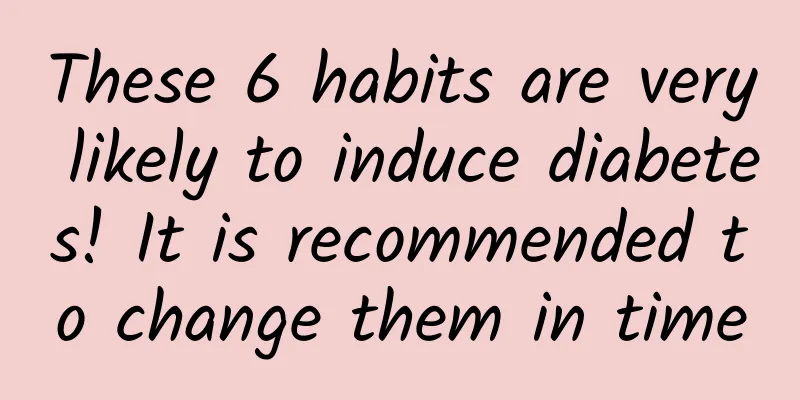Xu Jiaxi from Unicorn Think Tank: In-depth report on the ventilator industry

|
Source: Unicorn Think Tank Source: Industrial Securities Economic and Financial Research Institute Author: Xu Jiaxi As the coronavirus rages around the world, ventilators have become "life-saving machines." Ventilators are mainly used in critical care medicine, home care, emergency medicine, and anesthesiology. The barriers to ventilator production and registration are high. The transformation to ventilator production requires breaking through barriers in many aspects such as raw material supply, parts assembly, and registration and certification. The global production of ventilators cannot be significantly increased in the short term. In the global ventilator market, the invasive ventilator market is dominated by foreign brands. China's invasive ventilator market is dominated by imported brands, with imports accounting for more than 80% of the market share. In recent years, domestic brands have also been on the rise. Manufacturers such as Mindray, Aeon, and Pubo have gained a certain market share in the domestic grassroots market and are also expanding overseas markets. There is a huge gap in ventilators to fight the epidemic at home and abroad. According to estimates, during the epidemic, the total demand for ventilators in the country is about 32,000 units, of which Hubei Province needs to build 33,000 beds in intensive care units and 15,000 beds in critical care units, requiring a total of 7,514 invasive ventilators and 23,000 non-invasive ventilators. Areas outside Hubei need to build 2,028 beds in intensive care units and 936 beds in critical care units, requiring a total of 468 invasive ventilators and 1,435 non-invasive ventilators. It is estimated that the global stock of ventilators outside China is about 430,000 units, and foreign countries need at least 1.33 million ventilators to respond to the epidemic, with a gap of up to 900,000 units. There are 21 invasive ventilator manufacturers in China, of which 8 have obtained the EU mandatory CE certification for their main products, accounting for about 1/5 of the global production capacity. The domestic positive industry has broad medium- and long-term market space. The demand for ventilators is not a short-term transient caused by the epidemic, but a long-term one, and there is a large room for growth. In 2016, global ventilator revenue was nearly US$5.88 billion, and production was about 6.6 million units, with a compound growth rate of 7.2%. In 2018, the scale of China's medical ventilator market reached 2.43 billion yuan, with an annual growth rate of about 15%. Compared with developed countries in Europe and the United States, there is still a big gap in the per capita ventilator ownership in China. After the epidemic, China's ICU construction will be gradually implemented, and the total incremental demand is expected to be 15,342 units in 2020, a year-on-year increase of 30.15%; in addition to the ICU department, other departments of secondary and above hospitals such as respiratory medicine, anesthesia, and emergency departments also have new demand for ventilators. At the same time, it is expected that the new demand for primary medical institutions and the five major centers will be more than 20,000 units each year in the next 2-3 years. In addition, there is broad room for growth in home ventilators in China in the future. Risk warning: Risk of uncertainty in the progress of the epidemic; risk of changes in the overseas macro-environment; risk of raw material supply. 1. As the global coronavirus rages, ventilators become "life-saving machines" 1.1 Principle of ventilator A ventilator is a medical device that can effectively replace, control or change a person's normal physiological breathing, increase lung ventilation, improve respiratory function, reduce respiratory consumption, and save heart reserve. It can provide breathing and mechanical ventilation for patients who are physiologically unable to breathe or who are short of breath. The ventilator achieves forced artificial respiration by establishing a pressure difference. The process of human inhalation is that the respiratory muscles contract to expand the volume of the chest cavity, forming a negative pressure to cause the alveoli to expand, and inhale air from the outside. The process of exhalation is that the respiratory muscles relax, causing the elastic contraction of the alveoli, increasing the pressure in the lungs, and exhaling gas to the outside. It can be seen that the respiratory function is formed due to the pressure difference between the expansion and contraction of human alveoli and the atmospheric pressure. The basic principle of the ventilator is to use a mechanical method to establish this pressure difference to achieve a forced artificial respiration process. The schematic diagram is shown in the figure: "1" in the figure is an exhalation check valve (rubber valve), "2" is an air inlet check valve, and "3" is an inhalation check valve. The breathing process of the patient controlled by the ventilator is: bellows compression → bellows pressure increases → check valve "1" closes (rubber valve bulges outward) → check valve "2" closes → check valve "3" opens → inhalation channel opens → air enters the patient's respiratory tract through the mask and reaches the lungs; the exhalation process is: bellows extension → bellows pressure decreases → rubber valve resets → check valve "1" opens (expiration channel opens) → check valve "3" closes (inhalation channel blocked) → lung gas discharges gas through the respiratory tract, mask and valve "1"; at the same time, check valve "2" opens, air enters the bellows, and prepares for the next inhalation process. The ventilator works in this reciprocating cycle, thereby establishing an artificially simulated lung breathing function. To realize these simulation functions, there must be a pipeline system (including: gas circuit system, drive components and monitoring sensors) and a circuit system (including: control circuit, monitoring alarm and drive circuit). As a result, ventilators of different types, models and technical parameters have emerged. Ventilators play an important role in modern medicine. In modern clinical medicine, ventilators, as an effective means of artificially replacing spontaneous ventilation function, have been widely used in respiratory failure caused by various reasons, anesthesia respiratory management during major surgery, respiratory support therapy and emergency resuscitation. Modern ventilators are controlled by computers, but patients can also be ventilated using a simple manual bag valve mask. Ventilators are mainly used in critical care medicine, home care and emergency medicine (as independent devices) and anesthesiology (as a component of anesthesia machines). 1.2 Ventilator Classification There are many types of ventilators in the market. According to their uses, they can be divided into: adult ventilators, infant and neonatal ventilators, anesthesia ventilators, assisted breathing and respiratory therapy ventilators, portable emergency ventilators, experimental animal ventilators, high-frequency jet ventilators, etc. From the perspective of drive mode, ventilators can be divided into 3 types: electric electronically controlled ventilators, pneumatic air-controlled ventilators, and pneumatic electronically controlled ventilators. According to the flow and pressure generator of the ventilator, it can be divided into 4 types: non-constant flow generator, non-constant pressure generator, constant flow generator, and constant pressure generator. Based on the connection method of the ventilator, it can be divided into two types: invasive ventilator and non-invasive ventilator. The difference between invasive and non-invasive mechanical ventilation lies mainly in the different connection methods between the ventilator and the patient. Any method of mechanical ventilation that requires an invasive artificial airway to be established through endotracheal intubation or tracheotomy is called invasive mechanical ventilation; and ventilation methods that are connected to the ventilator through relatively non-invasive methods such as nose, mask, and interface, or do not require the establishment of an artificial airway, are collectively referred to as non-invasive ventilation. In a broad sense, non-invasive ventilation should also include external negative pressure ventilation, chest wall oscillation ventilation, external diaphragm pacing, etc., but the so-called non-invasive ventilation currently refers only to non-invasive positive pressure mechanical ventilation (NIPPV) connected to the patient through nose, mask, etc. The fundamental difference between invasive and non-invasive ventilation is the difference in the selection of the human-machine interface, and the ventilators connected to them can be the same or different. A fully functional and well-designed invasive ventilator can also be used for non-invasive ventilation, while a general ventilator dedicated to non-invasive ventilation is not suitable for invasive ventilation due to its limited working pressure and other performance. Looking back at the history of mechanical ventilation, the process is from invasive to non-invasive (extracorporeal negative pressure box ventilator) and then back to invasive, and finally entered the era of coexistence of invasive and non-invasive (NIPPV). Invasive and non-invasive ventilation each have their own different indications. The relationship between the two is complementary rather than contradictory, so there is no question of which is better. In recent years, invasive ventilation technology has been rapidly developed and popularized in my country. Compared with it, non-invasive ventilation may still have considerable room for development and potential. The new generation of non-invasive ventilators has made great improvements in oxygen concentration regulation, airway humidification, synchronization performance, and the tightness, comfort, and reduction of repeated breathing of the matching nose and mask. Therefore, its indications have a tendency to gradually expand. It is believed that as patients' requirements for quality of life increase, non-invasive ventilation methods that can retain eating and language functions will gradually increase in clinical application in my country. However, whether in my country or in some developed countries, medical staff lack confidence in the efficacy of non-invasive ventilation, and the relevant technology and knowledge are not popular enough, which is still one of the main obstacles to the development of non-invasive ventilation. The selection of indications for non-invasive ventilation is being explored both at home and abroad. It is currently believed that non-invasive ventilation can have satisfactory therapeutic effects in the following situations: 1) obstructive sleep apnea syndrome; 2) for the treatment of acute and chronic respiratory failure that does not require invasive ventilation, so as to reduce or avoid the use of invasive ventilation, such as acute respiratory failure caused by lung infection, bronchial asthma, etc., and acute attacks of chronic respiratory failure in patients with COPD; 3) during the withdrawal of invasive mechanical ventilation; 4) treatment of pulmonary edema. Indications for invasive ventilation include: 1) the patient's condition has not improved or continues to deteriorate after non-invasive ventilator treatment. 2) impaired consciousness and poor airway protection. 3) severe organ dysfunction (massive upper gastrointestinal bleeding, hemodynamic instability, etc.). 4) severe abnormal breathing form, such as respiratory rate >35-40/min or <6-8/min, abnormal respiratory rhythm, weak or absent spontaneous breathing. 5) Blood gas analysis indicates severe ventilation (or) oxygenation disorder: PaO2 <50 mmHg, especially PaO2 <50 mmHg after adequate oxygen therapy; PaCO2 increases progressively and pH decreases dynamically. According to the 2018 edition of the "Medical Device Classification Catalog", there are six types of ventilators, including four types of Class III medical devices and two types of Class II medical devices. Ventilators managed as Class III medical devices are generally used for life support, mainly in intensive care units (ICUs) and respiratory wards, while ventilators managed as Class II medical devices are used for non-life support, mainly non-invasive ventilators, which can be used in respiratory wards or at home. 1.3 The barriers to ventilator production and registration are high Recently, the new coronavirus is raging around the world, and has spread to more than 200 countries and regions so far, and the number of confirmed cases worldwide continues to rise. As life-saving machines, ventilators have also been snapped up by countries around the world, and production capacity is seriously insufficient. As the shortage of ventilators becomes increasingly serious, countries encourage companies to transform and produce ventilators. The US federal government, based on the restarted Defense Production Act, has forced General Motors and Ford, two major American auto manufacturing giants, to cross-border produce ventilators. As the epidemic in the United States gradually worsens, Trump specifically asked Tesla to build ventilators, and the governor of New York also made a similar request to alleviate the huge demand for ventilators in New York State. Transforming the production of ventilators is not an easy task, and it requires breaking through barriers in many aspects such as raw material supply, parts assembly, and registration and certification. According to the Forward-looking Industry Research Institute, it takes up to 40 days for professional medical equipment manufacturers to produce a ventilator; manufacturers who switch to the production of ventilators may need to go through the process of changing production lines, overcoming technical difficulties, and opening up supply chains. It may take 540 days to achieve mass production. Affected by the epidemic, logistics obstruction, shortage of key components and insufficient raw material matching capacity have also become the reasons why the global production of ventilators cannot be significantly increased in the short term. The production process of ventilators is complicated. The development of ventilators in China started late. In 1958, a bell-type positive and negative pressure ventilator was manufactured in Shanghai, and in 1971, an electric time-switching constant volume ventilator was manufactured. In recent decades, with the rise of companies such as Mindray Medical, Aeon Medical , and Yuyue Medical, the research and development and production level of ventilators in China has increased significantly. The ventilator industry chain can be divided from top to bottom into upstream raw material and software chip suppliers, midstream body manufacturing companies, and downstream circulation and application scenarios. The production of an invasive ventilator requires more than 1,000 parts, among which the core components involve voice coil motors, turbine fans, sensors, chips, proportional valves, etc., most of which are produced and supplied by European and American companies. The turbo blower is equivalent to the engine of the ventilator. It provides positive pressure gas to the patient, assists the patient's breathing, and enhances gas exchange and cardiopulmonary coupling. The turbo blower needs to have a high speed and a fast response speed so that it can quickly increase or decrease the pressure according to the patient's breathing rate. If the output pressure is not enough and the response speed is not fast enough, the patient will not be able to receive effective treatment. The main suppliers of turbo blowers are from Europe and the United States. There are also domestic companies producing them, but the noise, speed, accuracy and sensitivity of the blowers are different from those of overseas products. Multiple sensor devices in the ventilator can continuously and accurately control airflow, pressure and humidity to maintain the comfort and safety of the patient. Typical ventilator equipment uses gas mass flow sensors, pressure sensors, humidity sensors, temperature sensors and magnetic sensors, which can monitor and help control airflow, pressure, humidity and temperature, while supporting stable motor control. Because of the need to ensure the reliability and safety of the ventilator, software and chips are the key to the big data processing of the ventilator. The solenoid valve is the switch valve of the oxygen source of the ventilator, and its role is also very important. In addition, the development and certification cycle of ventilators is long. Under normal circumstances, the registration and filing time for ventilators is about one and a half years, and it will be longer if clinical trials are added. Recently, major epidemic countries or regions such as Europe and the United States have also issued temporary or emergency measures for the supervision of prevention and control materials to relax access requirements. The Secretary of the U.S. Department of Health and Human Services announced on March 24, 2020, local time, that emergency use of medical devices (including substitute products used as medical devices) is allowed during the COVID-19 pandemic. In accordance with relevant U.S. regulations, emergency use of ventilators, anesthesia machines modified for use as ventilators, and positive pressure ventilators modified for use as ventilators (collectively referred to as "ventilators"), ventilator pipe joints, and ventilator accessories determined by the FDA to meet the safety, performance and labeling standards of relevant regulations are authorized for emergency use in medical environments for treating patients during the COVID-19 pandemic. On March 28 this year, Mindray Medical's medical ventilator obtained the EUA (Emergency Use Authorization) certification from the U.S. Food and Drug Administration (FDA). On April 1, Yuyue Medical received the EUA issued by the FDA, obtaining access to the company's non-invasive ventilators sold in the United States during the epidemic. Mindray and Yuyue’s ventilator products have previously obtained CE certification. 1.4 Competition landscape of ventilators at home and abroad In the global ventilator market, the invasive ventilator market is dominated by foreign brands, including Sweden's Getinge, Switzerland's Hamilton Medical, Dräger, Medtronic, GE Healthcare, Philips Respironics and other brands occupying the global mid-to-high-end ventilator market. In recent years, domestic brands have also been on the rise. Manufacturers such as Mindray, Aeon , and Pubo have gained a certain market share in the domestic grassroots market and are also expanding overseas markets. As of March 31, 2020, there were 126 types of ventilators approved for marketing in China, of which 95 were managed as Class III medical devices and 31 were managed as Class II medical devices. China's invasive ventilator market is dominated by imported brands. Brands such as Medtronic, Draeger, and Siemens have a high degree of recognition in China, accounting for more than 80% of the market share. Compared with invasive ventilators, the non-invasive ventilator market has relatively low production processes and requirements. Domestic brands can almost compete with foreign brands on the same stage, accounting for 40% of the national market. In the 2019 ranking of China's medical ventilator sales, medical device giants such as Dräger, Philips, and MycoVee are in an advantageous position, and the leading domestic companies are mainly Mindray Medical, Shenzhen Coman, and Beijing Aeon . Although there is still a certain gap between domestic medical ventilators and leading foreign products, domestic medical ventilator brands have been gradually established in recent years. For example, since Mindray Medical launched its ventilator in 2012, after many updates and product upgrades, the company now has the strength to compete with top international manufacturers in the field of invasive ventilators for hospital use. Domestic brands mainly occupy the low-end and mid-range markets and penetrate into the mid-range and high-end markets. Products of manufacturers such as Mindray and Yiyang are also sold overseas and have received good market feedback, accounting for 30%-40% of the ventilator market share in developing countries. In terms of domestic medical ventilator exports, Mindray Medical is far ahead. According to statistics from the first half of 2019, Mindray accounted for as much as 77.54%, basically monopolizing the overseas export of medical ventilators, followed by Beijing Yiyang. Home ventilators are Yuyue's main position, accounting for 45.02%. Recently, the Ministry of Commerce, the General Administration of Customs, and the National Medical Products Administration issued the 2020 No. 5 "Announcement on the Orderly Export of Medical Supplies": From April 1, 2020, enterprises exporting new coronavirus testing reagents, medical masks, medical protective clothing, ventilators, and infrared thermometers must provide a written or electronic statement when declaring to the customs, promising that the exported products have obtained my country's medical device product registration certificate and meet the quality standards of the importing country (region). Customs will inspect and release based on the medical device product registration certificate approved by the drug supervision and management department. The list of companies with ventilator export qualifications currently announced is as follows: 2. Fighting the epidemic at home and abroad, there is a huge shortage of ventilators 2.1 Demand for ventilators for COVID-19 at home and abroad Severe and critical COVID-19 patients need to use ventilators for life support. Severe patients' lungs are damaged by the virus and cannot breathe independently. They produce a lot of mucus in their lungs and their oxygen content decreases. They must use ventilators to deliver oxygen outside the body to ensure the oxygen content in their blood, so as to maintain the patient's life activities and buy time for clinical treatment. The "Consensus on Diagnosis, Treatment and Management of Severe Novel Coronavirus Pneumonia" (hereinafter referred to as the "Consensus") issued by the National Health Commission and various hospitals in February divides severe COVID-19 patients into ordinary, severe and critical types with high risk factors for developing severe illness. Among them, the recommendations for the treatment of severe and critical patients mentioned that severe patients need to use non-invasive ventilators for treatment, while critical patients need to use invasive ventilators or even extracorporeal membrane oxygenation (ECMO) for treatment. In addition, the "Consensus" provides corresponding guidance on the number of beds in intensive care units and the configuration of ventilators. The severity of the epidemic in Hubei Province is higher than in other parts of the country, and the resources of critical care medicine departments are tight. As of April 11, 2019, there were 67,803 confirmed cases of COVID-19 in Hubei Province, accounting for 81.30% of the confirmed cases nationwide, and the confirmed cases in Hubei Province accounted for 0.11% of the permanent population of Hubei Province; there were 15,597 confirmed cases outside Hubei, accounting for 0.001% of the total population outside Hubei. According to public data, the number of intensive care beds in Wuhan was expanded to 9,000 after the outbreak. Assuming that the proportion of new ICU beds in Hubei Province is equivalent to that in Wuhan, the number of intensive care beds in Hubei Province needs to be expanded to about 48,000. According to statistics from the China-World Health Organization Joint Expert Investigation Team, the proportions of mild, severe and critical patients of the new coronary pneumonia are about 80%, 13% and 6% respectively, and there are also some asymptomatic infections. If the proportion of severe and critical patients in Hubei Province is similar to that in the whole country, then according to the guidance of the "Consensus", Hubei Province needs to build 33,000 beds in intensive care units and 15,000 beds in critical care units; a total of 7,514 invasive ventilators and 23,000 non-invasive ventilators are needed. As of April 11, 2019, there were 15,597 confirmed cases in the country except Hubei. We believe that the resources of critical care medicine departments in the country except Hubei are not as tight as those in Hubei, so we do not use the ratio of the national (excluding Hubei) population to the Hubei population to calculate the number of new ICU beds needed. If the proportion of severe and critical patients in other parts of the country is similar to that of Hubei, 13% and 6% respectively, then according to the guidance of the Consensus, other regions need to build 2,028 beds in intensive care units and 936 beds in critical care units; a total of 468 invasive ventilators and 1,435 non-invasive ventilators are needed. Therefore, during the epidemic, the total demand for ventilators in the country is about 32,000 units. According to data released by the Ministry of Industry and Information Technology on April 8 this year, since February this year, my country's ventilator manufacturers have supplied nearly 29,000 ventilators to the whole country, of which nearly 18,000 were supplied to Hubei, including 3,000 invasive ventilators. 2.2 Demand for ventilators for the COVID-19 pandemic abroad Since March 2019, the overseas epidemic broke out and spread rapidly. As of April 10, 2019, the global cumulative confirmed cases reached 1.696 million, and the current cases reached 1.217 million. Among them, the epidemic in the United States is the most serious, with a total of 499,000 confirmed cases and 452,000 current cases. According to our prediction of the overseas epidemic using the SIR model, the United States, Italy, Spain, France and other countries are expected to reach the peak of infection before the end of April, and the United Kingdom is expected to reach the peak before the end of May, but the epidemic in third world countries such as India will take longer to reach the peak. Earlier during the epidemic, industry insiders calculated that my country had about 80,000 ventilators in stock, corresponding to a population of 1.4 billion, equivalent to about 6 ventilators per 100,000 people; while European and American countries have a higher number of ventilators per capita. The UK has 8,000 ventilators in stock, corresponding to a population of 66.48 million, equivalent to about 12 ventilators per 100,000 people, twice as much as my country. Therefore, using the current per capita ventilator stocks in China and the UK as a comparison, and calculating the ventilator stocks in developing and developed countries, the current ventilator stocks in other regions of the world except China are about 430,000. After the outbreak in the United States, the Association of American Medical Colleges predicted that up to 960,000 Americans would need ventilators. A 2018 report by the Johns Hopkins Center for Health Security stated that the United States had a stock of about 160,000 ventilators, which was simply unable to meet demand. Statistics show that the EU has a ventilator shortage of at least 25,000 units. According to Fortune magazine, the global demand for ventilators is 10 times the current number of medical institutions. Assuming that the peak number of confirmed cases in all countries and regions in the world except China is twice the current number, foreign countries will need at least 1.33 million ventilators to respond to the epidemic, with a shortage of 900,000 units. As the epidemic spreads rapidly around the world, foreign demand for medical equipment, especially invasive ventilators, has increased dramatically. There are 21 invasive ventilator manufacturers in my country, of which 8 have obtained the EU mandatory CE certification for their main products (weekly production capacity of about 2,200 units), accounting for about 1/5 of the global production capacity. At present, about 20,000 international orders have been signed, but a large number of intended orders are being negotiated every day. According to data released by the Ministry of Industry and Information Technology on April 8, domestic manufacturers have supplied nearly 18,000 ventilators to foreign countries, including more than 4,000 invasive ventilators, but this is nothing compared to the huge global demand. Overseas, Swiss ventilator brand Hamilton Medical accounts for 1/4 of the global ventilator production, with an annual production of 1,500-2,000 units in 2019, an average of more than 100 units per month. If the company is fully productive, the monthly production capacity may reach 1,500-2,000 units. Medtronic has announced that it will double the production capacity and supply of ventilators to meet the urgent needs of patients and medical systems around the world during the COVID-19 pandemic. Assuming that the global epidemic continues until the end of September, we make the following estimates of the ventilator sales and net profit increase of related listed companies: 3. Domestic emerging industries have broad market potential in the medium and long term 3.1 Domestic and overseas ventilator market size According to data from QY Research Center, the global revenue of ventilators in 2016 was nearly 5.88 billion US dollars, and the output was about 6.6 million units, with a compound growth rate of 7.2%. The United States is the largest production base for ventilators, with a production market share of nearly 43% in 2016, and Europe is the second largest production base for ventilators, with a production market share of nearly 20% in 2016; from the perspective of consumption, the United States is the largest consumer region, with a consumption market share of nearly 43% in 2016, and Europe ranks second with a market share of 23%. In recent years, as the income of Chinese residents continues to increase, people's health awareness has increased significantly. In addition, the country's requirements for equipment configuration of medical institutions have been gradually improved and implemented. The production and consumption of medical ventilators in my country have continued to rise, with an annual growth rate of about 15%. In 2018, the market size of medical ventilators in my country reached 2.43 billion yuan. High-end development is an important development trend of the ventilator industry. During the period of 2012-2018, the scale of high-end models in my country's medical ventilator market gradually increased, reaching 55.97% in 2018. According to grassroots survey data, the terminal price of high-end invasive ventilators is generally more than 400,000 yuan per unit, the price of mid-range invasive ventilators is generally between 200,000 and 400,000 yuan per unit, and the price of low-end invasive ventilators is generally less than 200,000 yuan. 3.2 Estimation of China’s ventilator demand The demand for ventilators is not a short-term one caused by the epidemic, but a long-term one with a large room for growth. Compared with developed countries in Europe and the United States, there is still a big gap in the per capita ventilator ownership in China. my country procured about 8,000 non-invasive ventilators in 2018. According to the estimated replacement rate of 5-7 years, my country currently has less than 80,000 ventilators, corresponding to about 60 ventilators per million people; the United States has about 160,000 ventilators, corresponding to 485 ventilators per million people. The per capita ventilator ownership in China is only 12.4% of that in the United States. In 2009, the former Ministry of Health officially announced the addition of the "Critical Care Medicine" diagnosis and treatment subject to the "List of Medical Institutions' Diagnosis and Treatment Subjects" and issued the "Guidelines for the Construction and Management of Critical Care Medicine (Trial)" (hereinafter referred to as the "Guidelines"). The "Guidelines" require that at least one ICU be established in comprehensive hospitals above the second level nationwide, and the number of critical care medicine beds in tertiary comprehensive hospitals should account for 2% to 8% of the total number of hospital beds. From 2010 to 2018, the number of critical care medicine beds owned by domestic health institutions increased from 13,192 to 52,568, with a CAGR of 18.10%. The ventilator industry used to be a niche industry, and the demand from medical institutions was limited. Last year, the domestic sales of ventilators were less than 20,000 units. According to survey data, the ICU of tertiary hospitals has about a dozen units, while that of secondary hospitals does not exceed 5 units. Moreover, the service life of a ventilator is usually more than 6 years, and the replacement cycle is relatively long. Here, we assume that the average number of ventilators in tertiary hospitals nationwide in 2018 is 10 units, with an update cycle of 6 years; the average number of ventilators in secondary hospitals is 3 units, and the update cycle is relatively longer, about 10 years. According to calculations, the number of ventilators in ICU departments in my country in 2018 was about 51,398 units, and reached 57,925 units in 2019. It is expected that after the epidemic, the construction of ICUs in my country will be gradually implemented, and the configuration of ventilators in medical institutions will be more reasonable. The total incremental demand is expected to be 15,342 units in 2020, a year-on-year increase of 30.15%. It is expected that the total number of ICU ventilators in my country will reach 82,412 units by 2021. In addition to ICU departments, other departments in secondary and above hospitals also have new demands for ventilators. According to the Basic Standards for Medical Service Capabilities of County Hospitals issued by the National Health Commission in 2016, a total of eight departments, including neurosurgery, respiratory medicine, cardiovascular medicine, thoracic surgery, anesthesiology, pediatrics, emergency medicine, and critical care medicine, have explicit requirements for the deployment of ventilators. As the reform of hierarchical diagnosis and treatment continues to deepen, the allocation of medical resources has further sunk to the grassroots level. On July 2, 2018, the National Health Commission issued the "Notice on Further Improving Trauma Treatment Capabilities", and so far, all the "five major medical centers" construction and management guidance documents have been released. In less than two years, the National Health Commission has issued six documents in a row, clearly promoting the establishment of five major medical centers in secondary and above hospitals, and issued construction and management standards, and clarified the necessary equipment configuration list for individual medical centers, and ventilators are mandatory equipment. In September 2018, the National Health Commission and the State Administration of Traditional Chinese Medicine issued the "Notice on Launching the "Quality Service at the Grassroots" Campaign", and also issued the Township Health Center Service Capacity Standards (2018 Edition) and Community Health Service Center Service Capacity Standards (2018 Edition), which made clear requirements for the equipment configuration of these two types of medical institutions, striving to ensure that the service capabilities of township health centers and community health service centers meet the basic standards, and that some township health centers and community health service centers with stronger service capabilities meet the recommended standards. This means that 37,000 township health centers and 35,000 community health service centers will accelerate the realization of standard construction, and the configuration of medical equipment has also become a top priority, among which ventilators are important configuration equipment to meet the standards. According to the requirements of the standards, township health centers and community service centers across the country must complete more than 95% of the C-level clauses, more than 50% of the B-level clauses, and more than 20% of the A-level clauses, otherwise they will be deemed unqualified. In addition, the "Notice" requires that institutions that meet the basic standards or recommended standards can apply to the provincial health administrative department for review in accordance with the procedures, and township health centers that meet the recommended standards and meet the relevant conditions can participate in the secondary hospital review. Assume that each primary medical institution below the secondary hospital in my country will add one ventilator, and the average update cycle is 10 years. According to calculations, it is expected that the new demand for primary medical institutions and the five major centers will be more than 20,000 units each year in the next 2-3 years. In addition, with the development of the economy, the increase in per capita disposable income, the continuous enhancement of people's health awareness, and the development of the family health care model under the traditional hospital health care model, have driven the rapid development of home medical devices. Home ventilators have a good therapeutic effect in the treatment of apnea, snoring, obstructive sleep apnea, central sleep apnea, hypopnea, apnea time monitoring, decreased blood oxygen saturation when apnea occurs, blood oxygen saturation recovery, reduction of sleep apnea hypopnea index, elimination of tongue suffix, and respiratory disorders. ResMed (NYSE: RMD, ASX: RMD), a leading home ventilator company headquartered in San Diego, had global sales of approximately US$3 billion for a single product in 2018, and Philips had global sales of approximately US$1.6 billion for a single product. In China, Philips' sales in 2018 were approximately RMB 500 million, ResMed's were approximately RMB 400 million, and Yuwell Medical's were less than RMB 200 million. With the advancement of domestic products and the promotion of indications for non-invasive ventilators, there is broad room for growth in the domestic market for home ventilators in the future. Risk Warning Risk of uncertainty in the progression of the epidemic; risk of changes in the overseas macro-environment; risk of raw material supply. Source: Unicorn Think Tank Source: Industrial Securities Economic and Financial Research Institute Author: Xu Jiaxi This article is published for the purpose of conveying more information, and does not mean that it agrees with its views or confirms its description. The content of the article is for reference only and does not constitute investment advice. Investors act accordingly at their own risk. PS: If you need Beijing Yian ventilator, please contact WeChat: 7281670 |
<<: Is the cold winter of entrepreneurship coming for China's manufacturing industry?
>>: MTC acquires Fengxing Online, and the transformation to the Internet becomes a trend
Recommend
How do smart home appliances eliminate the "gap" between products and users?
To this day, there is still no clear definition o...
How much does it cost to develop the Guangzhou drinking water reminder mini program and the drinking water alarm mini program?
According to statistics, the amount of water a per...
The TV industry is moving towards segmentation: games become the biggest active variable
Since the development of China's television in...
What is the paid search effect? Here are four revelations for corporate promotion
"I know that half of my advertising expenses...
It turns out that humans are not the only ones who quarantine! Let’s see how animals do it
Wash hands frequently, wear masks, avoid crowds.....
iOS UIWebView URL interception
When the translator was developing an app, becaus...
In order to prevent the bird from being "reckless", do this now
Birds are the most common "animal neighbors&...
Qingyun live e-commerce Baidu cloud download
1. Course Introduction Qingyun live e-commerce 2....
Virtual Reality Landmines: Deep Immersion ≈ Deep Addiction?
Virtual reality, an interactive technology that i...
Beginner operations cat, how to deal with the first demand output!
A year ago, when I first joined a unicorn company ...
If it doesn’t look like the Land Rover Aurora or the Landwind X7, will anyone still buy it?
Plagiarism and imitation are the inevitable paths...
The Double 11 holiday marketing is ready to go, how can we take advantage of this wave of traffic dividends?
What exactly is the "Double Holiday" an...
Fruitwood Wanderer Intermediate and Advanced Guitar Course
Fruitwood Wanderer Intermediate and Advanced Guit...
It is said that a Chinese poet thousands of years ago "saw" the Earth from outer space...
The Mengtian Laboratory Cabin has recently become...
Compiled APP promotion and operation knowledge [Android application market promotion activities]
Overview Currently, the markets that can apply fo...









